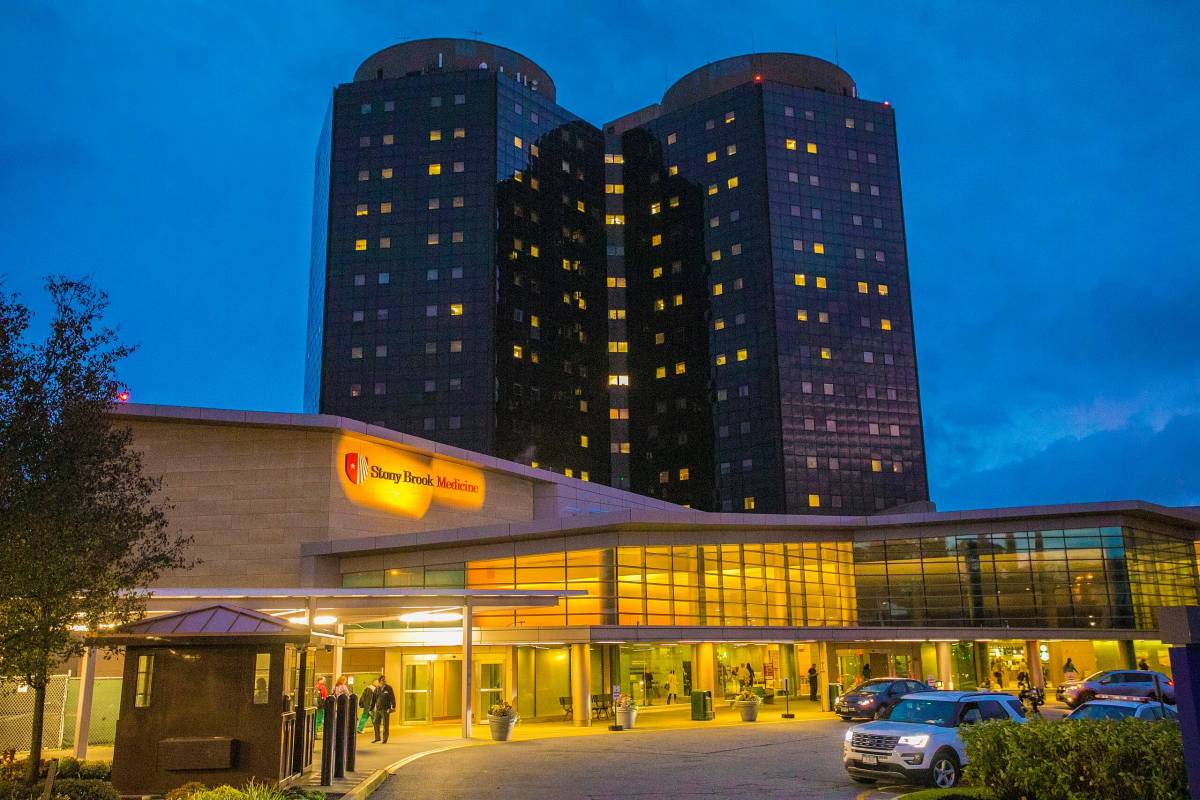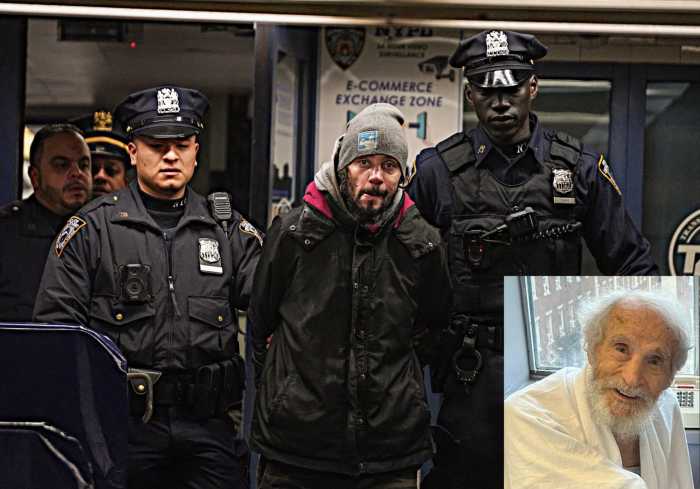Long Island Mental Health Patients Stuck in Traffic Jam of Hospital ERs
Names have been changed to protect the anonymity of sources concerned about being stigmatized by publicly discussing their mental health.
“It was very scary in there,” said Anna Sanders, a 22-year-old woman who was admitted to Long Island Jewish Medical Center for suicidal ideation in February. “I felt so nervous because I felt like I wasn’t in the right place.”
After being medically and psychologically evaluated, Sanders waited for about four hours, she said, until a bed in the hospital’s Inpatient Psychiatric Pavilion, a Northwell Health facility, was open. During this time, she told the Press, she sat in a dark room on a bed that had no pillows or blankets. All her belongings were confiscated as she sat alone with her thoughts — the very reason she was there — for hours. Sanders said that if she were ever in a life-threatening mental crisis again she would not go to the emergency room due to her terrifying experience.
Sanders’s experience is not only not abnormal, it is better than others — she had a bed and a room and did not have to spend the night alone in the emergency department.
Manish Sapra, M.D., executive director of behavioral health services at Northwell Health, said that more than 30 behavioral health patients are seen a day across the 10 Long Island Northwell hospitals. “Behavioral health” is an umbrella term used by hospitals to refer to their psychiatric and psychological services. According to Sapra, due to the high volume of patients, what Sanders experienced is quite common.
“We have a special room that we put any psychiatric patient in and it’s a safe room,” said Pat, a retired emergency nurse who worked at Stony Brook Medicine Eastern Long Island Hospital for 38 years. “There’s nothing in that room, not even a regular blood pressure cuff, anything that a person could use in a different manner.”
However, many Long Island emergency departments do not have enough safe rooms for the number of patients they are admitting.

According to Jay Itzkowitz, M.D., chair of emergency medicine at Mount Sinai South Nassau, his emergency department receives about six behavioral health admissions every day, which is a higher volume than in previous years. However, only two rooms are dedicated to those patients. Most emergency departments have rooms dedicated to behavioral health admissions to ensure the safety of the patient and others.
“We do have some rooms, but unfortunately, the number of patients that we do have exceeds the amount,” Itzkowitz said. “During the day, they might be in the hallway if there’s no other place.”
According to Kristie Golden, Ph.D., executive administrator and associate director of operations for Stony Brook University Hospital and the Stony Brook University Neurosciences Institute, Stony Brook University Hospital received about 7,000 people with emergency psychiatric in 2022, a number which is higher than in previous years.
When emergency departments do not have a room for a mental health patient who is unstable, the patient is restrained to a bed in the hallway.
“We have leather restraints on both arms and both legs and they are restrained to the bed,” Pat said. “How else can you keep the patients safe from themselves and other people around?”
Otherwise patients are put in a room for hours that often has no TV or any other entertainment, no blankets or pillows, and sometimes not even a bed. Medical professionals refer to them as safe rooms, but Elly Colon, a 21-year-old woman admitted to Northwell Health’s Long Island Jewish Medical Center Emergency Department for mania, said the room she was in was more akin to a “holding cell.”
“The ER itself was not scary, but the holding cell area was terrifying,” Colon said. She was admitted to the emergency room at 10 p.m. but a bed in an inpatient facility was not available until 11 a.m. the next morning. For 13 hours, Colon sat in a room on a bed, exhausted and covered with thin blankets, staring at the blue-colored walls, she said. All her belongings were taken from her and she decided to pretend she was asleep in order to avoid any confrontation.
According to Colon, a woman arrived after she had been waiting a few hours. The woman was showing obvious signs of being mentally unstable and was screaming as she was restrained to a bed. In the area of the emergency department where behavioral health patients are kept, a number of security guards are stationed to ensure that the patients do not harm themselves or anyone else. The security guard tasked to watch the screaming woman was yelling back at her, according to Colon.
“She was clearly not in the right headspace and he would scream back at her,” Colon said. “He was calling her ugly and whenever she would calm down, he would just agitate her again. I didn’t want the people in there to know I was awake because I was scared.”
Colon said she thinks that people staffed in emergency departments with the task of watch over behavioral health patients should be better trained to handle mental health crises.
Barbara Osborn, vice president of public relations for Northwell Health, declined to comment on the situation.
“We had training on how to not escalate the situation,” Pat said, “how to keep a patient calm and how to restrain a patient because we had to restrain them quite often.” According to Pat, all nurses and staff at the hospital she worked at receive training on how to interact with behavioral health patients.
All Mount Sinai South Nassau’s emergency department staff and security have undergone Crisis Prevention Institute Training (CPI), a training program helping staff and caregivers de-escalate crisis said Damian Becker, director of public relations for Mt. Sinai South Nassau.
Northwell Health has mandatory training for their staff on how to interact with patients in any hospital setting. However, only certain behavioral health clinicians are trained on how to interact with behavioral health patients.
Other patients complain about the conditions in which they had to wait for many hours.
Alex Grabias, a 20-year-old Hofstra student, was admitted to the Long Island Jewish Medical Center Emergency Department for attempted suicide. He arrived around 2 a.m., all belongings were taken, and he had to wait in a room by himself for nine hours until a bed opened up in an inpatient facility.
“The TV didn’t work [and] my phone had already been taken away so I basically just sat there doing nothing from like 2 to 11,” Grabias said. “You have to just sit and wait with your thoughts, which are the reason you’re there in the first place.”
Although Sanders, Colon and Grabias are all legally adults, if they wanted to leave the emergency department at any point during their stay, they would not have been allowed to because they were on a psychiatric hold (when an individual is deemed unsafe to themselves or others after being evaluated by a psychiatrist and they are legally required to be involuntarily admitted to an inpatient facility). However, if no beds are open in an inpatient facility, they are required to remain in the emergency room.
The Mount Sinai South Nassau Hospital Emergency Department has about 130 psychiatric holds every month, according to Itzkowitz. Golden said that of the 7,000 patients seen a year, 30% of them are put on a psychiatric hold. That would be about 2,100 people a year. When asked about the number of psychiatric holds in the past year, the New York State Department of Mental Health said that they did not have those records. Northwell’s Sapra said that they did not keep track of those numbers.
Northwell facilities on Long Island have a total of 600 psychiatric inpatient beds and in the past year, 10,000 behavioral health patients have been admitted, said Sapra. He explained that the process of accessing a bed in an inpatient facility is more complicated than it seems.
“After the psychiatric consultations, many of these hospitals do not actually have their own inpatient psych unit,” Sapra said. “Then begins the process of finding a psychiatric bed and that usually means calling 17 different places and presenting the case again and again. It takes hours to find a bed.”
Sapra said, however, that increasing the number of beds in inpatient facilities would not solve the problem. He described it as a “traffic jam” requiring a more comprehensive approach.
“There are actually hospitals that have beds available,” Sapra said. “They don’t have the psychiatrists or the nursing staff to work there and keep those beds open. There are patients who are waiting in the inpatient units for safe discharge and they’re stuck there in the inpatient units because they don’t have access to the next level of care.”
Sapra said the focus should be on behavioral health ambulatory services. Northwell has one — Zucker Hillside Hospital’s Adult Behavioral Health Crisis Center in Glen Oaks — where people can speak with a psychiatrist or therapist in moments of crisis.
“Ninety-five percent of patients who come to the crisis center actually get discharged instead of admitted,” Sapra said. “I think the state needs to invest more in these kinds of ambulatory programs. The emergency department is just not a good place for a mental health patient.”
Stony Brook University Hospital has a similar ambulatory program called the Comprehensive Psychiatric Emergency Program (CPEP). Instead of waiting in the emergency department for hours, patients who come to Stony Brook University Hospital’s emergency department are immediately transferred to the CPEP unless they have medical needs that need to be addressed first.
“It’s relatively nicely laid out. It’s basically a ‘U’ shape with one side being for adults and one side being for children,” Golden said. “There are individual rooms and a center area where people can congregate for groups and other activities.”
According to Golden, patients usually stay at the CPEP between 5 and 24 hours before they are either transferred to an inpatient facility or released with resources and outpatient care. She said, however, that these types of ambulatory programs need more resources and investment.
“The ambulatory system needs resources in order to be able to serve a larger population of people more proactively,” Golden said. “People should not have to wait to get an outpatient appointment and I think that’s a dilemma for all of the ambulatory providers because there’s a shortage of behavioral health workers.”
Mount Sinai South Nassau Hospital is also taking measures to address the issue.
“We are in the midst of construction for a new emergency department and one of the things that we’re doing to help out our behavioral health population is, we are building a separate six-bedded area that’s kind of off to the side,” Itzkowitz said. “They can be brought straight into that area, which will be a quieter area. There are amenities in there such as a TV.”
Sanders said she thinks mental health patients are not receiving the care that they deserve.
“It comes down to government and money,” said Pat, emphasizing that change needs to happen on the governmental and state level in order for comprehensive, lasting change to take place.
“I feel like psych patients are just cast aside and not really thought about,” Sanders said. “Mental health services should be treated the same as physical health services.
Related Story: Northwell Leaves Syosset Hospital Psychiatric Unit In the Dark


































